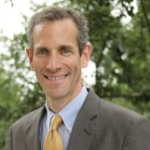Economically vulnerable households take longer to recover
Research by the Urban Institute finds that economically vulnerable households are far more likely to endure long-term financial hardships after a natural disaster. Communities of color experience an average 31-point credit score decline compared to a 4-point decline for majority-white homeowners following a medium-sized disaster.
My own research considers whether and to what extent vulnerable communities are at greater risk of being in the pathway of natural disasters. The recent Eaton fire in Los Angeles County offers a stark example. Researchers at the UCLA Ralph J. Bunche Center found that 61% of Black households in Altadena were in the fire perimeter compared to 50% of non-Black households, and 48% of Black-owned homes were damaged in the fire compared to 37% of non-Black-owned homes.
Difficulties with obtaining assistance
When major disasters are declared, homeowners are eligible for federal aid to recover and rebuild. These funds are particularly important for disadvantaged homeowners. However, applying for and receiving assistance can be arduous, and aid is limited. Grants and loans for rebuilding from agencies like the Department of Housing and Urban Development (HUD) and the Small Business Administration (SBA) generally lag – sometimes by many months – emergency aid provided by the Federal Emergency Management Agency (FEMA).
State and local governments may have a say on when, where – and even if – rebuilding can occur. The stress is compounded for elderly or disabled homeowners, non-native English speakers, sole providers with young children, and homeowners in lower-wage professions.
Government agencies and public interest groups sponsor helpful post-disaster assistance and recovery information. However, for disadvantaged households, even straightforward advice presents special challenges. Consider the dilemma for a one-parent family in a rural area where temporary shelter options are few or non-existent. Lack of transportation will compound the problem. Short-term housing far removed from childcare, schools, or workplaces may be non-starters for some households.
The struggle to keep up with mortgage payments
Lower-income homeowners are more likely to have a mortgage than wealthier counterparts. For cash-strapped mortgage holders of destroyed homes, an added stress is the continued expectation of loan payments even while an insurance claim is open.
The homeowner can reach out to their mortgage servicer to seek a forbearance. If granted, payments may be discounted or temporarily suspended. Fannie Mae, one of the country’s largest providers of mortgage financing, offers counseling by phone or online to help homeowners navigate the post-disaster forbearance process.
Even with the help of the mortgage servicer, challenges can pile up for owners of heavily damaged or destroyed homes. Many homeowners policies provide additional living expenses (ALE) to cover costs like hotel bills, temporary rent, boarding of pets, and reasonably priced meals and groceries. But these policies can have caps and time limits. Lower-income homeowners with fewer savings are more likely to depend on ALE. Stress mounts if ALE runs out before an insurance claim is paid and/or an affordable replacement home is found or built.
A need for the “whole community”
Owning a home with a mortgage is challenging enough. For lower-income homeowners, a mortgage on a destroyed home is an extraordinary burden. The L.A. wildfires cast these challenges in sharp relief. Households recovering from a disaster can tap the aid resources mentioned in this article, from the emergency relief available from FEMA to the housing counseling services of Fannie Mae.
But there is a larger context to consider: Disaster recovery requires collective action. Studies show that affected communities come together in the wake of catastrophe. Survivors also need help from allies outside the disaster zone.
In 2011, the federal government declared that a “whole community” approach was needed to prepare for “more frequent, far-reaching, and widespread” natural and manmade disasters. Increasingly, the “whole community” implicates all of us.






